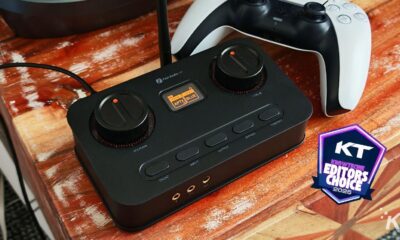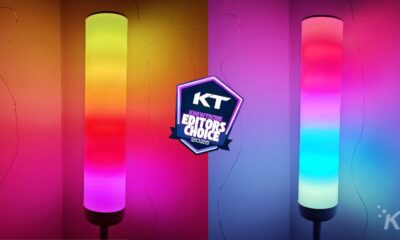Reviews
Review: Dwarflab’s Dwarf 3 makes stargazing easy for beginners
It’s your gateway to capturing breathtaking deep space images, even from the city.
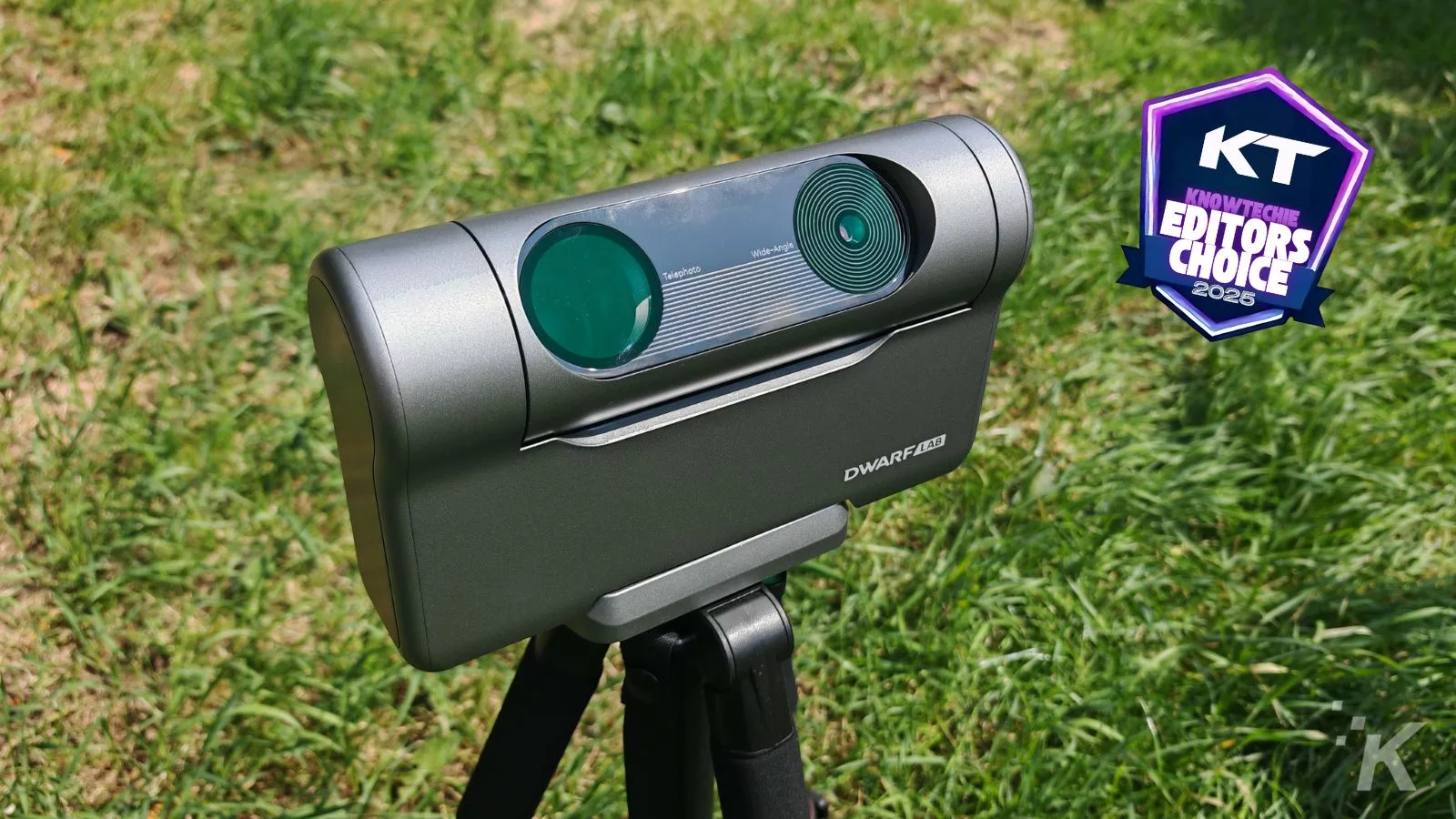
Just a heads up, if you buy something through our links, we may get a small share of the sale. It’s one of the ways we keep the lights on here. Click here for more.
I was pretty excited when the opportunity arose to review Dwarflab’s $599 Dwarf 3 smart telescope. However, nothing could prepare my brain for the deep space images an amateur like me could capture from my garden.
In the middle of a light-polluted UK city. With an LED streetlamp brighter than the sun a mere 5 meters away.
If astrophotography has always interested you, but you didn’t know where to start, then the Dwarf 3 makes an excellent starting point. Let’s look at why.
- Stunning images of deep space objects
- Compact
- Easy to set up and use
- Ideal for a beginner
- Great software
- Accurate object tracking
- Visually striking detail and depth to images
- Slightly short battery life
- Not good for planets
Box clever
In the box, you will find:
- The Dwarf 3 smart telescope
- Padded carrying case
- Solar filters with carry pouch
- Cleaning cloth
I would also advise buying a separate tripod if you have the cash for one. Dwarflab’s tripod has a hydraulic head unit, although I find my third-party tripod works perfectly well for my needs.
Not your average-looking telescope
Now I will start here by saying I have never used a smart telescope like the Dwarf 3 before. I had played around with a friend’s object tracking scope, but that was the kind with an eyepiece that you look through.
It was also about 15 years ago, so obviously the tech has advanced since then.
The space gray Dwarf 3 looks nothing like a traditional telescope. There is no eyepiece or viewfinder attached to the scope. Everything is done via the associated app. I mean, this is a smart telescope after all.
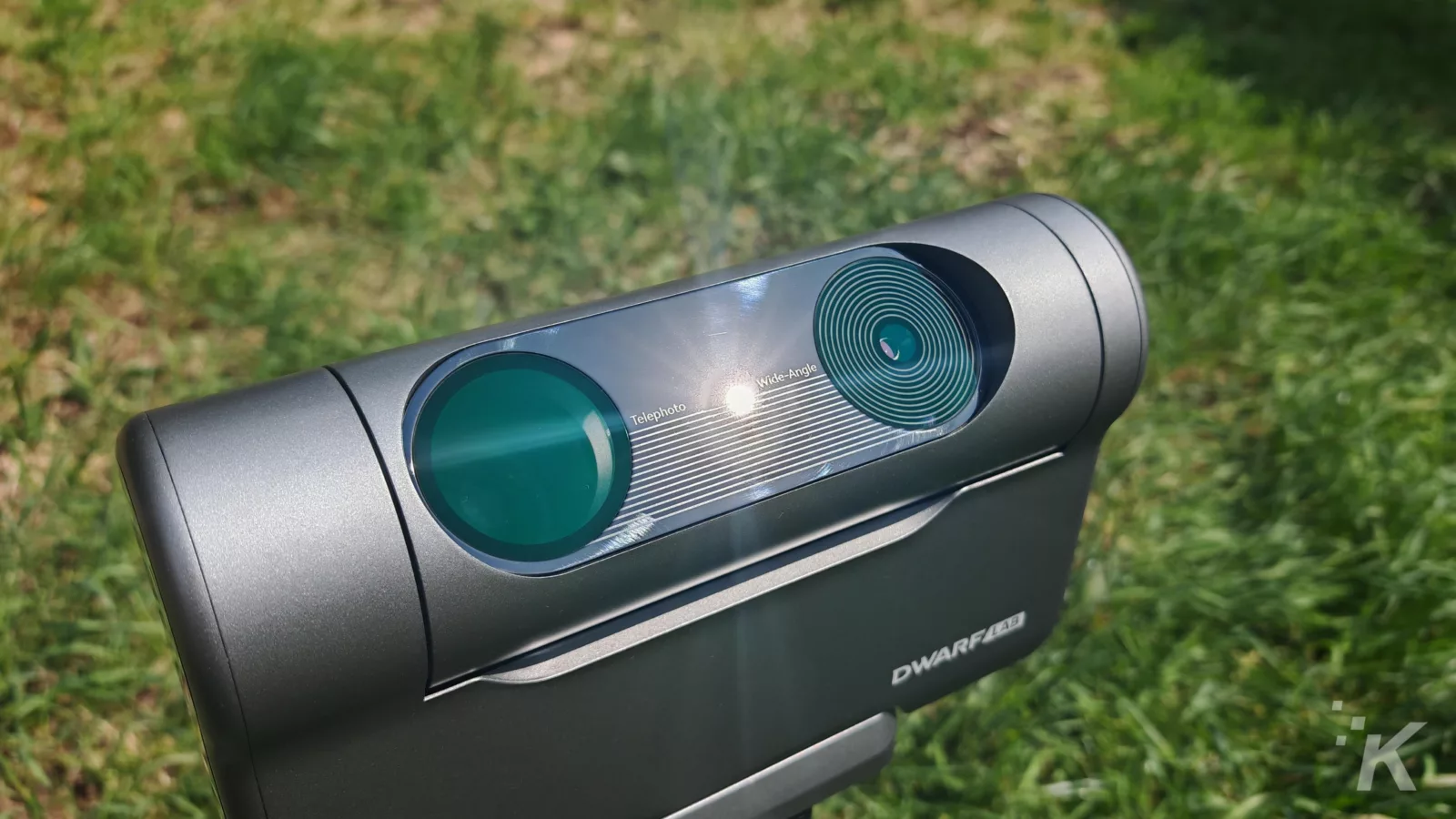
In terms of its shape, it is rectangular from its front profile, while it is keyhole shaped when viewed from the side.
It has a cylindrical, motorized head unit which houses the two lenses, and this can rotate around the horizontal axis to track objects across the sky.
At the bottom is a motorized platter. This enables the scope to rotate around the vertical axis, again for optimal object tracking, while also housing the USB-C charging port.
There is a rubberized power button on the right of the device surrounded by LED status lights, which will either be red (seeking a connection) or green (connected to the app).
Weight-wise, we are looking at a device that tips the scales at a modest 1.3kg, and 222x142x65 mm in terms of dimensions. So it is eminently portable.
Star-studded specs
On to the internal gubbins. This is a great scope for beginners, but it doesn’t skimp on the up-to-date components and features:
| Aperture Diameter | 35 mm (Tele) 3.4 mm (Wide) |
| Focal Length | 150 mm (Tele) 6.7 mm (Wide) |
| Equivalent Focal Length | 737 mm (Tele) 45 mm (Wide) |
| Sensor | SONY IMX678 Starvis 2 |
| Built-in Filters | Tele: VIS/Astro/Dual-band Wide: Astro (for day and night use) |
| Battery | Built-in 10000 mAh with External USB Charging Support |
| Storage | 128GB eMMC included |
| Shooting Modes | Photo (Tele & Wide) Video (Tele & Wide) Astro (Tele & Wide) Pano (Tele & Wide) Burst (Tele & Wide) Timelapse (Tele & Wide) |
| NPU | 5 TOPS |
| Telephoto Video | Max. Resolution / Frame Rate 4K@30fps 1080p@60fps |
| Telephoto Picture | Max. Resolution 3840 × 2160 |
| Wide-Angle Video | Max. Resolution / Frame Rate 1080p@30fps |
| Wide-Angle Picture | Max. Resolution 1920 × 1080 |
| Max. Exposure Time | In Astro Mode 60s (Tele) 90s (Wide) (both in EQ mode) |
| More Functions | NFC One-Touch Connection Astro Mosaic Wide-Angle Astrophotography |
Stellar ease of use
If, like me, you have literally never used a smart telescope before in your entire life, the learning curve might seem a little bit steep and daunting at first.
However, I can assure you that once you have set the device up and had a quick fiddle with the app, any apprehension will disappear.
This is a smart telescope, and as such everything happens either inside the scope or on the Dwarflab application. Mainly the app in terms of your interaction, as this is your viewfinder and control center.
The thing that really impressed me about the Dwarf 3 is precisely its ease of use. I found setup to be relatively quick and straightforward, although it took a couple of goes for the initial connection to activate.
However, after this it has been plain sailing every subsequent reconnection.
I popped it on a tripod, fired the device up, opened the app, and within a few taps I was ready to start shooting stars (pun totally intended).
Once it is up and running, the telescope does all the donkey work for you, leaving you to enjoy the process with your feet up.

Using the Atlas function you can search the skies for a suitable celestial body, select it from the Atlas map, and the Dwarf 3 will conduct a bit of coordination with the sky before locking onto your chosen deep space object and tracking it for you.
Once tracking, you can start thinking about setting up your shots. For complete novices, I would recommend you head over to Reddit and check out the settings other Dwarflab community members are using for their photography.
This will give you a feel for what settings you need for the different intergalactic phenomena.
I’d like to mention that the menu systems are very user friendly. There isn’t an intimidating number of options to toggle between, so even for someone who hasn’t used this sort of device before, it feels easy to navigate between and adjust settings.
I did notice that the Dwarf 3 has a really hard time connecting to my tablet (an Honor Pad 9). In fact, it doesn’t connect at all. I would have loved this; mainly because of the larger screen on the tablet and therefore the ability to see the composing image in more detail.
Having read countless community posts about the device, though, I can see this isn’t the case for everyone, so it might just be my tablet and the fact it is a couple of years old now.
It would just be nice to be able to keep my smartphone connected to the home WiFi while the tablet took care of the Dwarflab app.
Anyway, that is a minor gripe and probably not an issue on behalf of the Dwarf 3. Anyway, once you’ve had a poke around the app and you’re tracking whatever you want to track, you can start snapping.
Cosmic performance

For caveat’s sake, I would like to point out that I have yet to use the device in an “official” dark sky zone. However, the images of deep space objects that I was able to capture just from my garden are truly astonishing.
I will start by saying I don’t think anything could prepare me for the first image I captured with the Dwarf 3. I was going into this blind so I definitely didn’t know what to expect.
As someone who fascinates over the natural world and beyond, my mind was blown into smithereens as I watched Bodes Galaxy and the Cigar Galaxy coming into view on my smartphone.
I will go on to say even less could prepare me for my first shot of a nebula, a couple of nights later. I noticed the Rosette Nebula was visible on the atlas, so I went and set up the scope in a dark corner of the garden.
With tracking and setup complete, I hit the photography button and started stacking images. I had the exposure set to 15 seconds, meaning the aperture is open that length of time to allow light in. You can set it up to 90 seconds if you wish.
Anyway, with two or three photos stacked I could already make out a faint rust-coloured shape emerging from the inky blackness of space. It was the Rosette Nebula coming into full bloom before my eyes and my goodness is it a beautiful sight to behold.
The final image was stunning to an amateur like me, and it has really sold the idea that this is a hobby I would love to pursue in a greater capacity.
Over the past few months (keeping in mind that the UK is almost always covered by clouds AND I live near the coast) I have taken some images I am really very happy with indeed.
One thing of note is that while it is amazing for images of DSOs (deep space objects), the sun, moon, and birdlife, the Dwarf 3 falls a little short on images of planets.
No gas giants or ringed planets for you my friend; it can’t capture them very well and they just turn out like blobs of light.
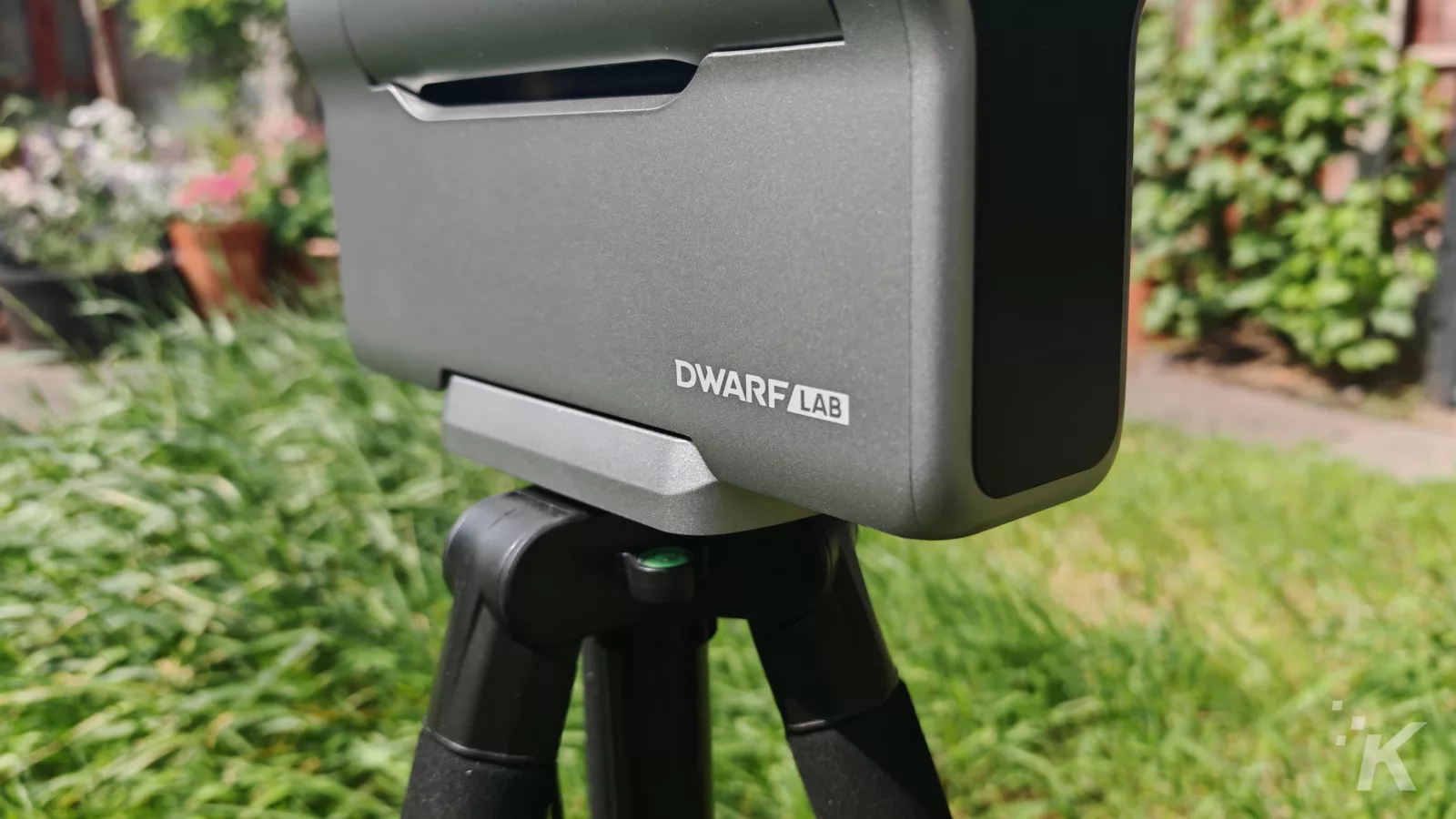
Although I do love the very minimalist image of Jupiter and a few of its moons that I shot. Not detail, though, and you can barely even make them out.
Occasionally image stacks can corrupt during the photography process, meaning that if you are a few hundred stacks in, a corruption can mean starting all over again and losing the hour or two just spent on taking the corrupted shot.
The only other minor sticking point I have performance-wise is the battery life. It is a little on the short side at an average of four hours (temperature dependent), so if you want to stack hundreds of long-exposure images, you’ll probably need an external power bank as well.
In all, though, I would (and have, to many many of my friends) recommend the Dwarf 3 as an amazing starting point for anyone looking to get into the astrophotography hobby, based on the performance of the device.
Now you can literally aim for the stars
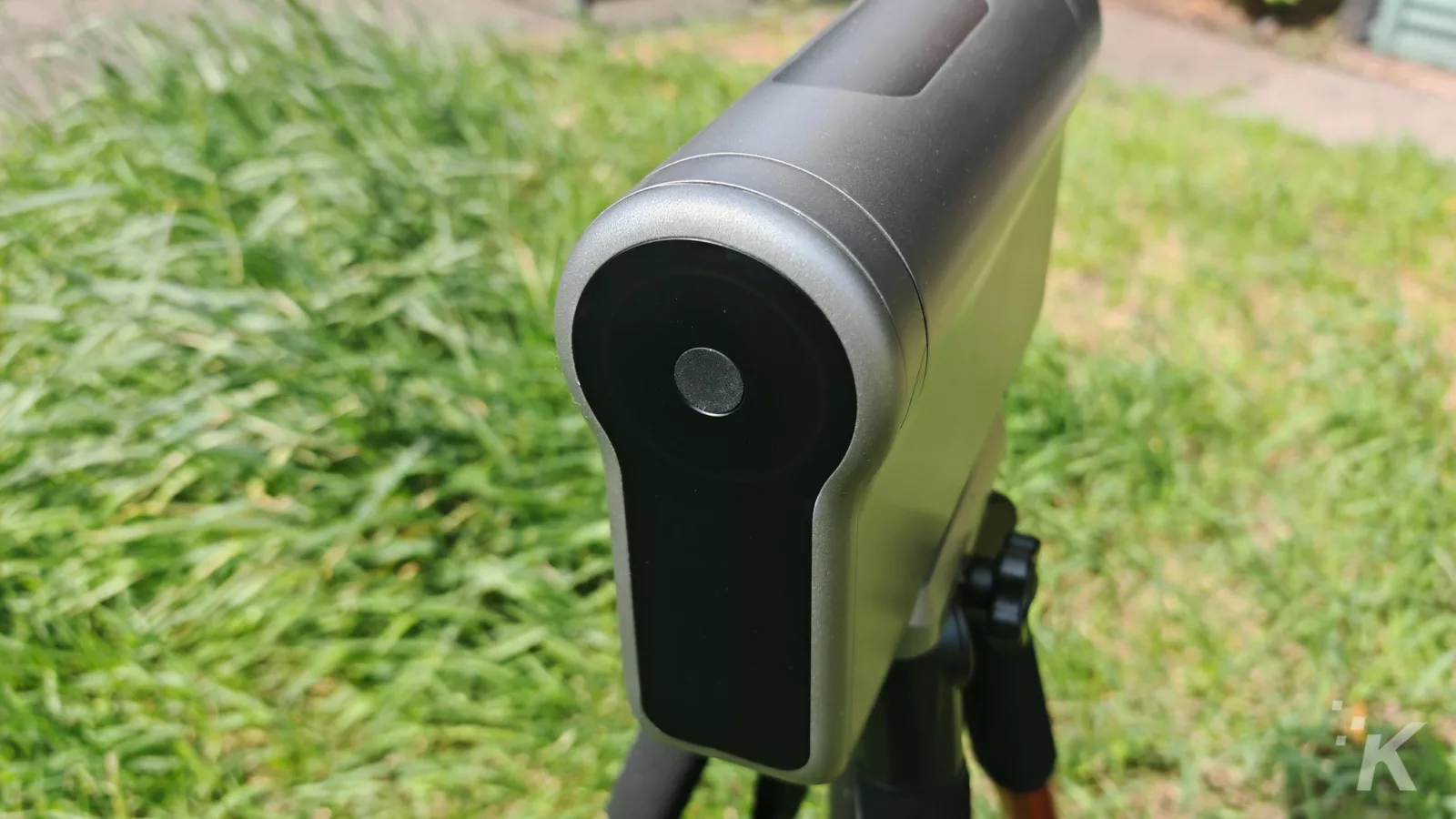
So, with all that in mind, are you convinced? Is the Dwarf 3 for you? I would say that it is suitable for anyone from a very first-timer to a casual enthusiast, and you’ll quickly become the latter if you’re starting as the former!
The Dwarf 3 has brought me a lot of joy, and I am confident that it will benefit anyone else who invests in one, in just the same way.
If you approach life with a sense of wide-eyed curiosity, then prepare for the Dwarf 3 to open those peepers even wider.
Dwarflab Dwarf 3 smart telescope offers beginner-friendly astrophotography with automated object tracking and app-controlled operation. You get dual telephoto and wide-angle lenses, a 10000mAh battery, 128GB storage, and a compact 1.3kg package.
- Stunning images of deep space objects
- Compact
- Easy to set up and use
- Ideal for a beginner
- Great software
- Accurate object tracking
- Visually striking detail and depth to images
- Slightly short battery life
- Not good for planets
Are you fascinated by the night sky but don’t know where to start with astrophotography? Have you been intimidated by complex telescope setups and astronomical equipment? The Dwarflab Dwarf 3 Smart Telescope could be your gateway to capturing stunning deep space images. Share your stargazing experiences in the comments below or tell us via our Twitter or Facebook.




























